
I never froze bread for any smart reason, just because I had too much and didn’t want it to go stale. But it turns out, I was doing something kind of brilliant without knowing it.
Freezing doesn’t just preserve bread; it changes it, from texture to how your body digests it.
In this guide, I’ll show you what really happens when you freeze bread, why it can actually make it better, and how to do it right for every kind of loaf.
What Actually Happens When You Freeze Bread

I always figured freezing bread just bought me a little time, a quick fix before it went stale. I never thought anything good was actually happening in there. Turns out, can you freeze bread isn’t the right question. The better one is what happens when you do, and the answer’s actually kind of cool.
When bread sits out, the starches start to harden and push out moisture. That’s what’s really happening when it goes stale. Freezing hits pause on that process. The cold locks those starch molecules in place before they dry out completely, keeping the crumb soft and the crust crisp.
Then, when you thaw or toast it, the structure “wakes up” again. Scientists call this retrogradation , and it’s part of why a frozen loaf can taste almost freshly baked.
And there’s another unexpected side effect, one that has more to do with you than the loaf (we’ll get to that later).
How to Freeze (and Thaw) Bread the Right Way
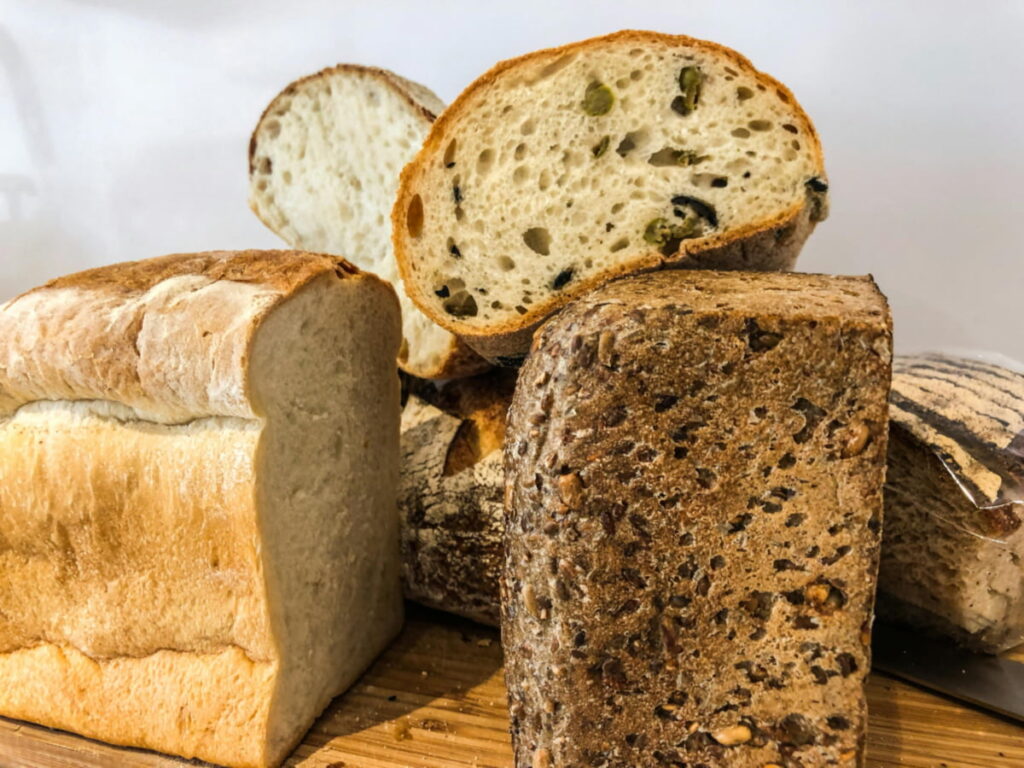
Freezing bread isn’t rocket science, though it can feel that way when you’re staring at half a loaf and wondering what to do with it.
My usual method is the lazy one. I just toss the whole thing in the freezer, maybe still in the bag it came in, and hope for the best. And honestly? It works fine most of the time.
But when I take an extra minute to do it properly, the bread comes out almost bakery-fresh instead of dry or icy. Here’s what makes the difference.
Freezing Basics
If you want to do it right (or just slightly better than me), here’s the sweet spot:
- Use it within three months for best taste, even though technically, bread can last up to a year in the freezer.
- Slice before freezing. Even if it feels tedious, you’ll thank yourself later when you can grab a couple of pieces instead of wrestling a frozen brick.
- Wrap well. Use plastic wrap, foil, or a reusable beeswax wrap, whatever keeps out air. Then slide the loaf into a freezer bag or airtight container.
- Double-bag for longer storage. Air is the enemy of texture, not cold.
- Label and date it. It’s just a simple way to keep track of how long it’s been in there.
- Use it within three months for best taste, even though technically, bread can last up to a year in the freezer.
Specialty Breads
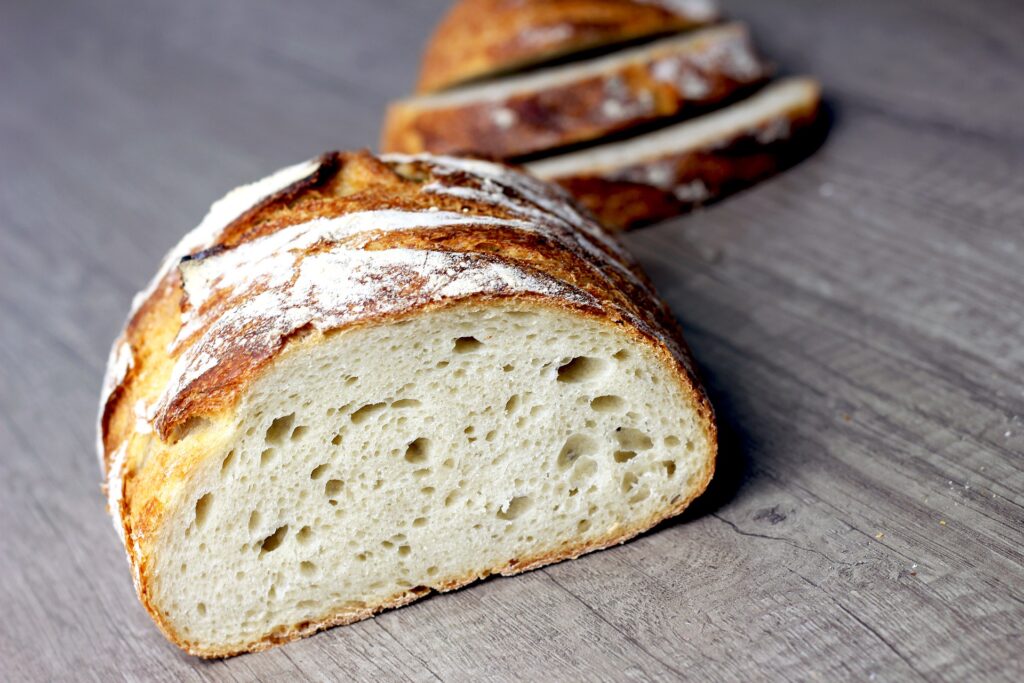
Once you’ve got the basics down, it helps to know that not every loaf behaves the same in the freezer. Some breads bounce back like nothing happened, while others need a gentler touch. Here’s what’s worked for me:
Sourdough: You can absolutely freeze sourdough bread, in fact, it’s one of the best breads to freeze. I slice mine first, wrap it tightly, and stash it in a freezer bag. When I want a piece, I go straight from freezer to toaster or oven. About 5–7 minutes at 350°F (175°C) brings back that chewy crumb and crisp crust.
Rye: Rye bread is dense and sturdy, which makes it a freezer superstar. Separate slices with parchment paper so they don’t stick together, and you can grab one whenever you need it. Toasting straight from frozen works perfectly.
Brioche or soft sandwich bread: These are a little more delicate. Because of the butter and eggs, brioche freezes well but prefers a slow thaw. I leave it on the counter for an hour or so, microwaving tends to make it tough or rubbery.
Hot dog and hamburger buns: These freeze beautifully, they’re basically made for it. I usually group them in pairs or meal-size portions, press out as much air as possible, and seal them tight. When I’m ready to use them, I just let them sit on the counter for about an hour, or warm them in the oven for a few minutes to bring back that soft, fluffy texture.
Gluten-free bread: This one’s a little trickier. Gluten-free loaves dry out quickly once thawed, so I always slice before freezing and toast pieces directly from frozen. It keeps the texture light and the edges crisp instead of crumbly.
Different breads have their own personalities in the freezer, once you know how each one reacts, you can freeze confidently and stop worrying about wasting a single slice.
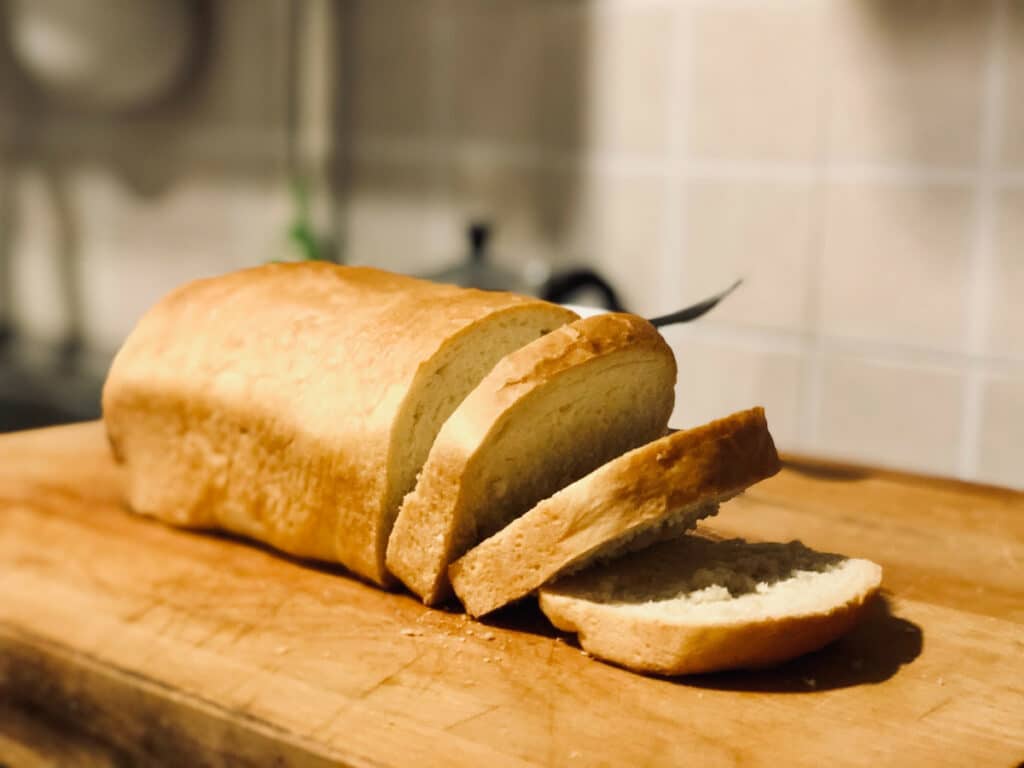
Thawing and Revival
Most days, I just take the bread out and let it sit, no special timing, no drama. Within an hour, it’s soft enough to slice or toast. If I’m in a rush, I throw it straight into the toaster from frozen, and it comes out crisp and warm, like it never spent time in the freezer.
For loaves or crusty breads like sourdough, a quick reheat makes all the difference:
- Oven method: Five to ten minutes at 350°F (175°C) revives the crust and brings back that just-baked smell.
- Steam trick: If the bread looks dry, add a little moisture, a damp paper towel in the oven or a quick spritz of water before heating works wonders.
- Soft breads: For brioche or sandwich loaves, thaw at room temp and toast lightly. The microwave tends to make them tough.
Freezing and thawing bread isn’t about perfection, it’s about learning what works for your kitchen and your patience level. Once you find that rhythm, the freezer turns into your best bread saver.
Does Freezing Bread Affect It’s Taste?
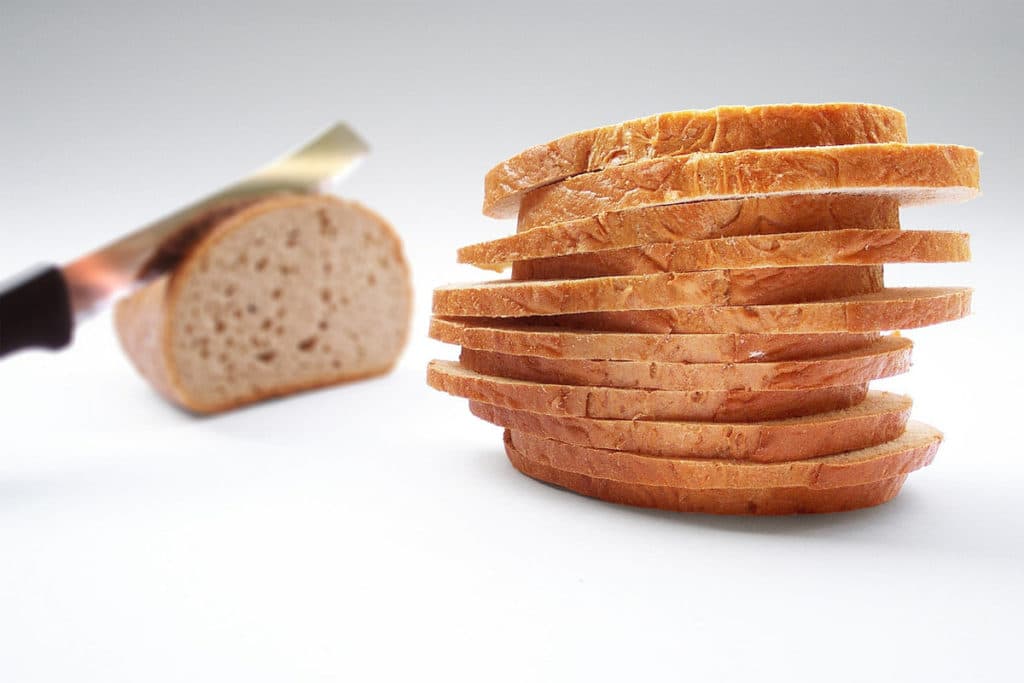
I’m sure you want to know about taste? Does frozen bread taste just as good as fresh bread? The answer is yes and no.
Some types of bread freeze better than others. For example, sourdough and rye bread tend to hold up well in the freezer, while Brioche and challah can become very dry and crumbly.
Bread that’s been frozen and thawed will always be a little drier than fresh, depending on how it was packed and how long it’s been in the freezer. That’s why toasting can make such a difference, it brings back the texture and warmth you miss from a fresh loaf.
If you’re curious, here’s my guide on how to reheat toast so it stays crisp instead of chewy.
How Long Does Bread Last in The Freezer?
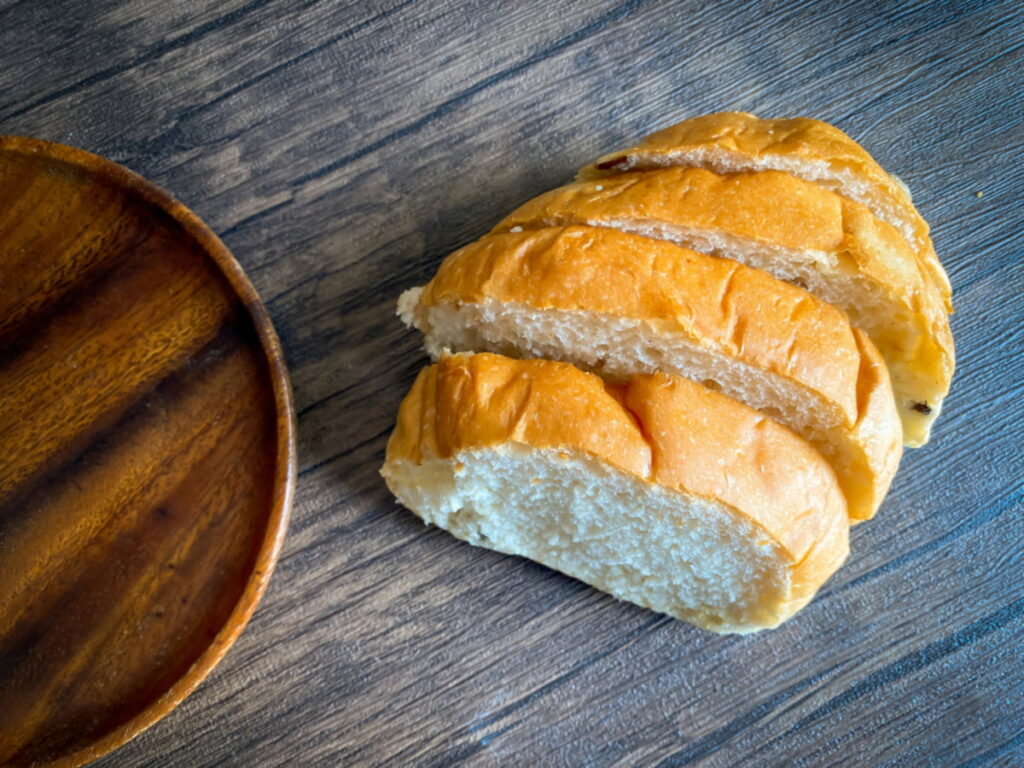
So how long can you actually keep bread in the freezer before it loses its charm? Longer than most people think.
According to food scientist Edward Willhoft, who studied bread and cake staling, it can last up to a full year if stored properly. On Quora, he explained:
“Provided the bread is wrapped in moisture-impervious film and thawed quickly, it should survive a year in the deep freezer. All the physical and chemical processes normally associated with staling become arrested by the low temperature.”
In simpler terms, freezing halts the staling process almost completely. That said, flavor and texture slowly fade over time, even if the science says it’s still “safe.” For the best taste, I try to use frozen bread within three months. After that, it’s fine for toast or breadcrumbs, but it loses that fresh-from-the-bakery feel.
The Sneaky Health Benefit of Frozen Bread
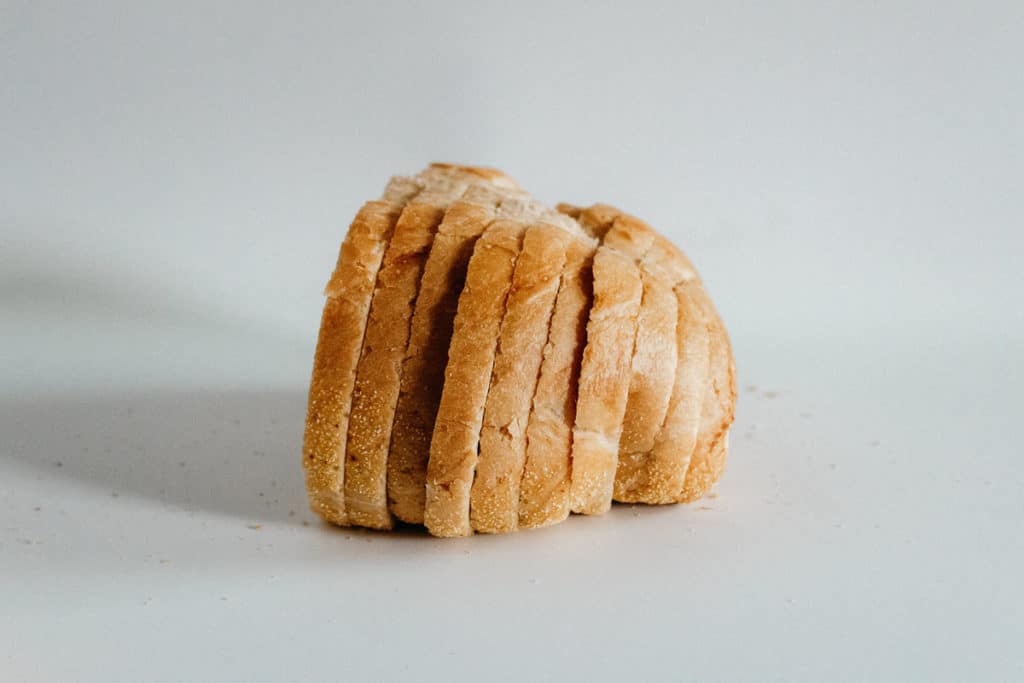
I only learned this part recently, thank you, Instagram rabbit hole, but freezing bread doesn’t just keep it from going stale. It actually changes what happens when you eat it.
When bread cools and freezes, the starch molecules reorganize in a process called retrogradation. That’s the same thing that gives stale bread its firm texture, but it also creates something called resistant starch.
Basically, some of the carbs become harder for your body to digest quickly, acting more like fiber than sugar.
The short version: frozen and reheated bread can cause a smaller blood sugar spike than fresh bread. Studies in journals like the European Journal of Clinical Nutrition have found that freezing and toasting white bread actually reduces its glycemic index.
I’m not saying frozen bread is suddenly a health food, but it’s kind of nice to know my lazy “freeze it before it molds” habit might have a bonus side effect. It’s like getting a tiny nutritional upgrade from the freezer, no effort required.
Basically, some of the carbs become harder for your body to digest quickly, acting more like fiber than sugar.
Why I Still Freeze Bread (and You Probably Should Too)
At this point, freezing bread is just part of how I cook and live. It saves me money, keeps breakfast simple, and means there’s always something good waiting in the freezer. What started as a lazy way to avoid waste turned into one of those small kitchen habits that quietly makes life easier, and maybe even a little healthier.
If you want to go deeper, check out my full guide on freezing food, it covers what actually works for everything from baked goods to leftovers.
And if you’ve got your own tricks for freezing bread, or questions about what actually holds up in the freezer, drop them in the comments. I’d love to hear what works in your kitchen.
So no, the freezer isn’t where bread goes to die. It’s where it waits for its next warm comeback.